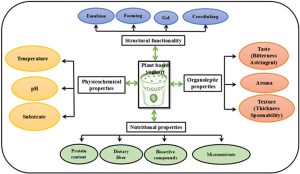A newly published review brings together emerging trends shaping the plant-based yogurt sector, with a strong focus on novel raw materials, bio-functional attributes, product stability and sustainability. The paper examines how manufacturers and researchers are pivoting beyond traditional plant milks to tap under‐explored ingredients, and how process innovations aim to meet consumer expectations around health, texture and eco-credentials.
According to the review, one major thrust is the use of novel raw materials in plant-based yogurt formulations—going beyond soy, almond or coconut to include pulses, legumes, oilseeds and by-products. This expands the ingredient palette and opens opportunities for higher protein, different flavour/texture profiles, and improved nutritional outcomes. The authors note that plant proteins often have weaker gelling or functional properties, which demands process innovation to build desirable structures.
In terms of bio-functionality, the review highlights the growing incorporation of probiotic cultures, prebiotics, bioactive peptides and other functional ingredients into plant-based yogurts. These functionalities aim to deliver benefits such as improved gut health, enhanced protein digestibility and added antioxidant or micronutrient value. At the same time, they can help differentiate products in a crowded market.
With regard to stability, the review underscores one of the significant technical challenges in plant-based yogurt: achieving texture, gel strength, water-holding capacity and syneresis (liquid separation) comparable to dairy yogurts. Studies show that fortification with plant-protein isolates (e.g., pea protein) or using advanced processing (e.g., high-pressure processing) can mitigate these drawbacks.
The sustainability perspective is also central: the review notes that plant-based yogurt production can support resource-efficient food systems provided ingredients, processing and packaging are optimized. It calls attention to value-chain choices—raw materials sourcing, up-cycling of agro-by-products, lower water/land use, and eco-friendly packaging—as part of the competitive edge for brands.
Latest Research
